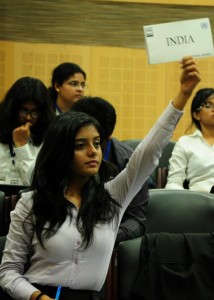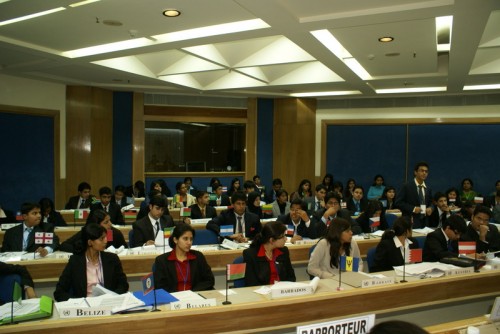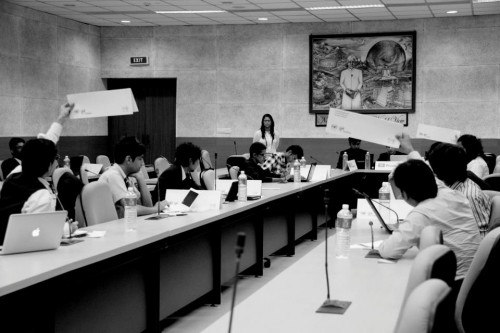The beginnings of Model UN in India can be traced back to 1996 when The Cathedral and John Connon School hosted the Cathedral Model United Nations in Mumbai. Then came the Indian Model United Nations Conference, hosted by the Ryan International Group of Schools in 2001, that put the concept of Model UN on the map of India.
But it was the onset of Global Classrooms’ DPSMUN in 2004, hosted by DPS RK Puram, proud recipients of UNA-USA’s Model United Nations Global Leadership Award, that new standards for Model UN were set in the country. Since then, there’s been no looking back.
In recent years, the Indian Model UN Circuit has exploded with conferences happening every weekend — sometimes multiple conferences on the same dates. The peak seasons for Indian Model UN are January to March and August to November. Around 200 conferences took place in 2012, with an estimated 70% happening for the first time.
In this article, I wanted to address what makes the Indian Model UN Circuit different and sets it apart from its international counterparts. After giving it a lot of thought myself, I spoke with a few people who have been very involved with Model UN here to get their thoughts on what makes Indian Model UN different.
Before I go on, let me be clear that I am not talking about which circuit has a ‘better’ quality of debate here. Rather, what are the differing factors that influence the quality of debate in the Indian Model UN Circuit and its counterparts?
A Different Quality of Debate

Another factor is that lobbying and unmoderated caucus are not given as much importance and time in most Indian Model UN Conferences, especially the collegiate ones which tend to focus maximum, if not all, time and energy in formal debate and moderated caucus, because of which the intensity of debate is very high but ultimately the resolution process tends to suffer as it does not get enough time as it should, ideally.
Activist Chairs and Executive Boards
Then there is the involvement of the executive board or the chairing staff, which also differs a lot. In most Indian Model UN Conferences, the chairs tend to get more involved in debate to a point where it leads to substantive interference in the debate, which is supposed to be more of a responsibility on the part of the delegates.
Whereas in most international conferences, the chairs stick to their roles of just moderating debate even when something very controversial may hit the floor and require clarification, which most of the times the delegates would by themselves, not be able to get around.
A Very Diverse Model UN Circuit
But having pointed all these things, I would like to say that the differences don’t only lie outside Indian Model UN Conferences but within Indian conferences as well. As one of the people I spoke to very accurately said, every circuit is so different in itself that if you made on delegate each from the major Indian Model UN sub-circuits — Delhi, Mumbai, and South India — you would not know which one of the actual style of Indian MUNs. In the end the diversity of the Indian Model UN Circuit is probably what sets it apart from other circuits. Much like the country, you get each and every style here, some more prominent, and some less.
So the starkest difference that is observed, not only here, but also everywhere, is in the modus operandi of the delegates. And when you think about it, this is one of the most brilliant things about Model UN; that it brings different people with different interests together at the same place trying to achieve the same objectives. Much like the United Nations itself, Model United Nations is helping bridge differences between people, not only from different countries, but also from different places within countries. Our viewpoints are becoming broader, our opinions are maturing, our learning curves are merging and above all we are understanding that there are problems that can only be hoped to get solved through cooperation and working together.
Even though the Indian Model UN Circuit has just caught on in the past few years, there is a lot of potential here and diversity. It is then apt to say that Model UN has indeed surpassed the conventional tag of an “extra-curricular activity” and become much more than just a hobby among Indian students who have taken to the concept with a different sense of passion.
Slowly, it is dawning upon people here that such conferences are not just for students interested in politics and international relations but in-fact, also for students who come from and aim to diversify in different walks of life. Model UN is helping students discover not only themselves, but their potential to make a difference in India, and in the world.




